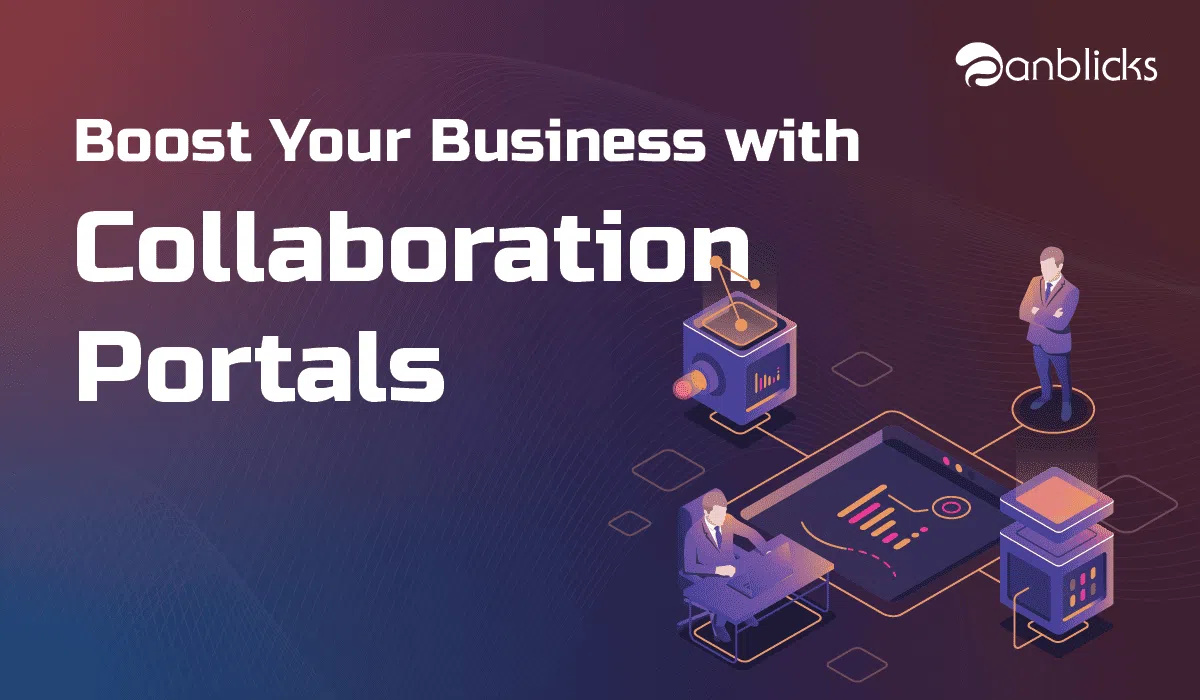
Fascinating Collaboration Portal Advantages That Can Boost Your Business

TL;DR
- Collaboration portals streamline communication among team members.
- They centralize project management and resources in one accessible location.
- Enhanced transparency fosters better decision-making and accountability
The definition of Collaboration is, “A combination of actions and efforts by groups or individuals in a group to work on a single task to achieve a goal or accomplish a task is called Collaboration.” In simple terms, Collaboration is a set of actions to meet a common objective or completion of goals on a single platform.
Enterprises and businesses these days understand the importance of Collaboration Portal Development to achieve a significant increase in task completion, knowledge gathering, and team-building exercises. Therefore we are witnessing a meteoric rise in demand for the development of collaboration portals.
With this, a question arises, “What benefits does Collaboration Portals provide?” that compels businesses to consider developing them. It begins with sharing ideas, information, and knowledge to be available on a single platform.
Businesses are characterized and shaped by global competition, increased specialization of expertise, and a fast-paced decision-making capability. For them, Collaboration is not just a buzzword but a key difference between success and failure. Enterprise Collaboration Software connects the right people with the right expertise and channelizes information sharing at the right time to drive the right business decisions.
The Achille’s hill for the collaboration portal remains its implementation. If done rightly at the right time, it creates a perfect celestial point for a meteoric rise in the company’s fortunes, and you miss one mark, and it is doomed to catastrophe. Therefore, it is imperative to ensure that it is implemented correctly to boost employee productivity, strengthen competitive positioning and drive innovations.
Top 10 Benefits of Collaboration Portal for Enterprises
Apart from usual benefits like developing strategies and credible Return on Investment (ROI), here are the top 10 benefits of having a collaboration portal in your organization.
1. Enhanced Productivity
Working together is not just an enamored thought. Collaboration portals are created to implement co-operation and cohesion between teams, departments, and verticals across offices and countries. Enterprises are always on the hunt for the optimization of resources.
And Collaboration Portal Development provides for it with integrated communication, document sharing, HRMS, and many other modules that enable and enhance the productivity of resources and employees.
2. Streamlined Collaboration
Business collaboration Portal makes document management a seamless task. Employees can share files with the community, small groups, or individuals with just a few clicks. Also, enterprises won’t have to worry about running into space or bandwidth issues.
Once you uploaded it to the system, files can be easily managed and store in whatever fashion you choose. So, facilitate information storing, sharing, and collaborative working. Intranet spurs collaboration by allowing employees to share files and store conversations.
3. Improved Communication
Communication is the most critical part of any business, and collaboration portal development aids in easing communication problems. It helps in mitigating issues in real-time and efficiently. Collaboration Portal gets its name for a reason – it works as a bridge that fills up the communication gap between employees.
It enables them to work together efficiently, even in remote locations. Team members can share documents, participate in discussions and do many other tasks within a single workspace.
Locating and viewing information becomes faster, anytime, anywhere. Increases employee ability to perform tasks faster within the time limit. Corporate information such as announcements, memos, staff news can be stored and accessed anytime, anywhere.
4. Cost-effectiveness and cross-platform compatibility
A single place to fetch, store and share information, documents, and important news gives you an edge over competitors. Collaboration portals provide ease with cross-platform compatibility on multiple operating systems like Windows, Mac, and UNIX.
It also supports browsers and is a vital part of enterprise mobility solutions for most businesses. It serves both as a tool for information gathering and sharing along with an integrated suite that is economical to develop and maintain.
5. Enhanced Visibility & Transparency for Stakeholders
Developing a customized collaboration portal in an organization enables stakeholders to see all project updates and the latest project status at all times. This helps set expectations and allows stakeholders to jump in if necessary.
Hence, enhance accountability among the team and allow your team members to go back and check if any mistakes were made and prevent them from recurring.
6. Improved Relationships with external stakeholders
Collaboration portals are created for internal stakeholders to work on internal issues and search for solutions. However, they can be customized to explore potential go-getters between external stakeholders like partners and customers too.
Collaboration portal software can be used in various ways to foster between partners, clients, and customer support. It helps to channel communications between customers and clients in a straight and secure manner by developing intranet portals.
Posting reports of bugs, submitting questions, issues, and browsing a knowledge base to your customers and vice versa can be done with the help of a collaboration portal.
7. Collaborative work management tools provide a central location for communication
Getting information from a single platform is both expedites decision-making and the learning curve for employees and management. Collaboration portals aides these by search and locate functions across silos and verticals.
Whether looking for some technical information related to a project or missing files, or just some development news, collaboration software has a built-in dashboard to provide you with all these vital and significant information along with sharing trivia questions and answers.
8. Saves time by eliminating meetings and spreadsheet management
Since you have all relevant information in the documented form of dashboards, time-consuming activities like status updates, to-do lists, meeting requests, etc., can be managed from there for everyone on the list. By eliminating these trivial activities, it allows decision-makers to devote time doing business-critical tasks more easily.
9. Allows for greater agility when demands change
Sudden and unplanned interventions in tasks and projects can lead to chaos both for planners and managers. A collaborative working environment eases these complex and tricky situations without interruptions. It provides ample time for provisioning, planning, and purposeful allocation of tasks to mitigate changing priorities.
10. Inspires innovation and participation across the team
It combines the team like an anthill. Co-operation between teams across divisions and departments can be clubbed under a single section in the collaboration software, mitigating stymied operational hiccups. Promoting team members based on their contributions create a profusion of ideas. Employees feel empowered to voice their concerns and raise the bar in forwarding organizational goals.
These reasons are essential enough for businesses to consider Implementing a collaboration portal. Progressive organizations understand the vitality of fostering knowledge sharing and combined working environments within their traditional and virtual teams to effectively use shared information for business enhancement.
Enterprises looking to expand their digital and business transformation will work towards adopting collaboration amongst their employees and other stakeholders.
Connect with our experts if you are looking to boost your business and knowledge sharing using Collaboration Portal Development.

Anblicks is a Data and AI company, specializing in data modernization and transformation, that helps organizations across industries make decisions better, faster, and at scale.







